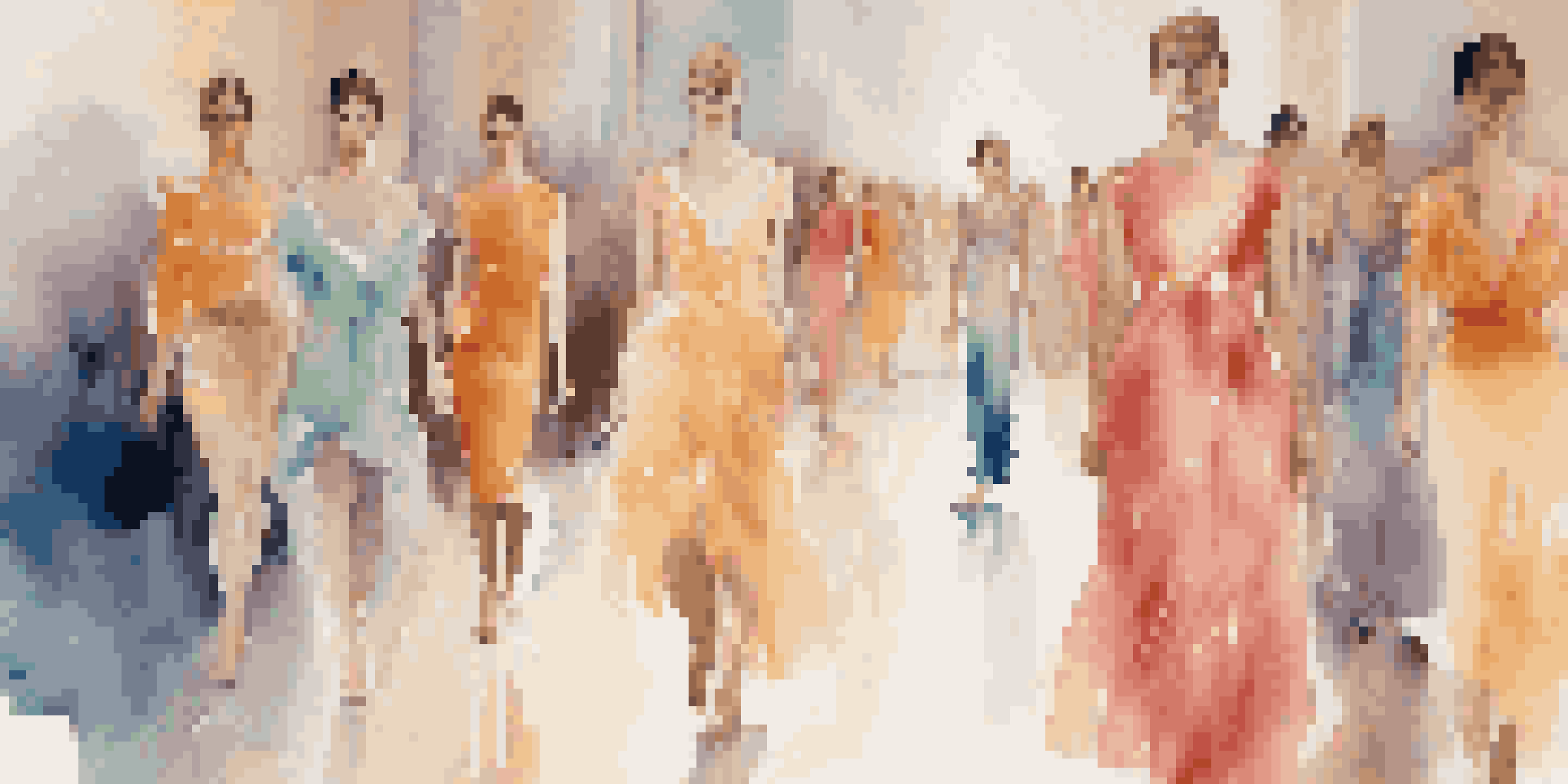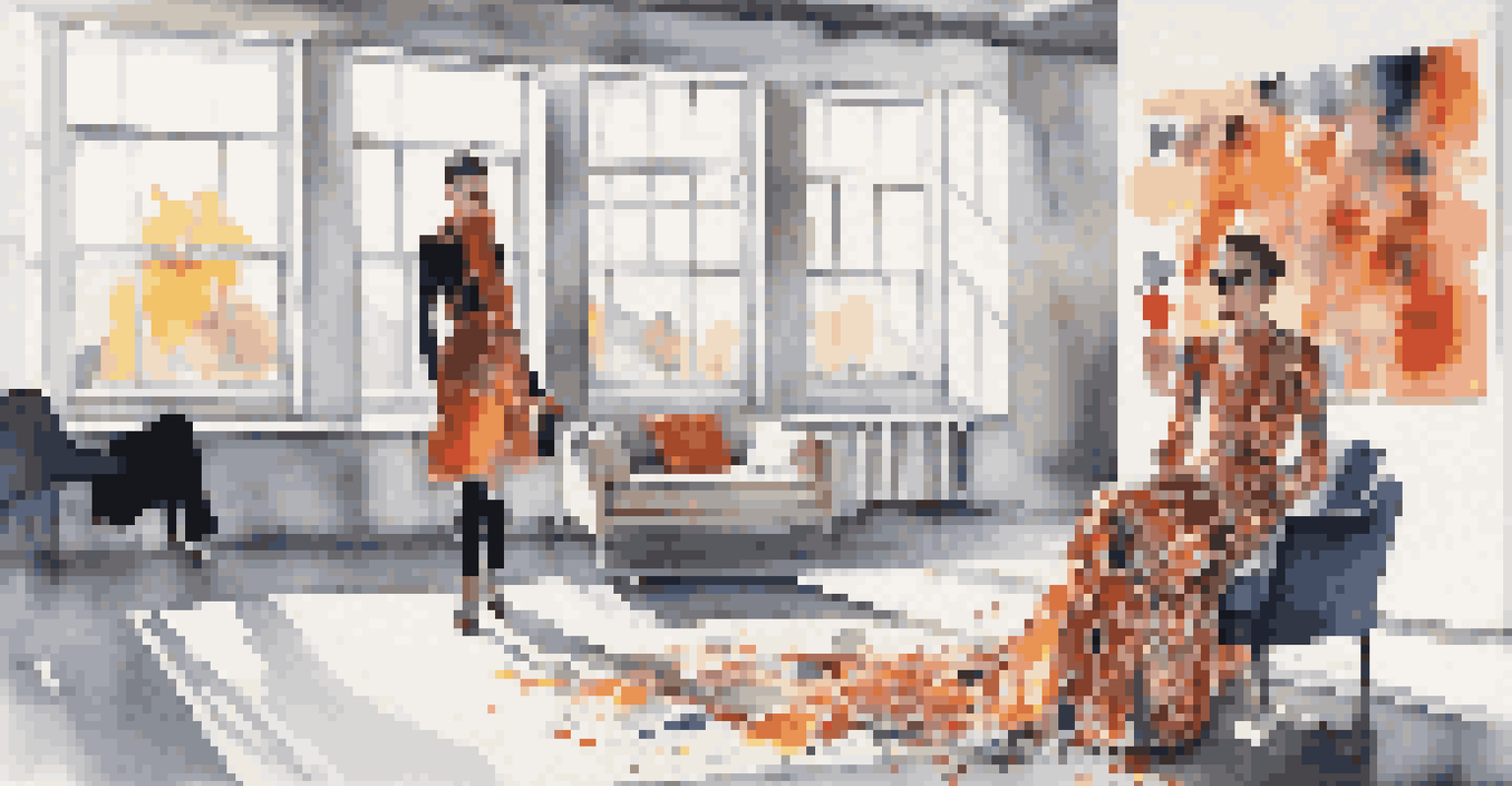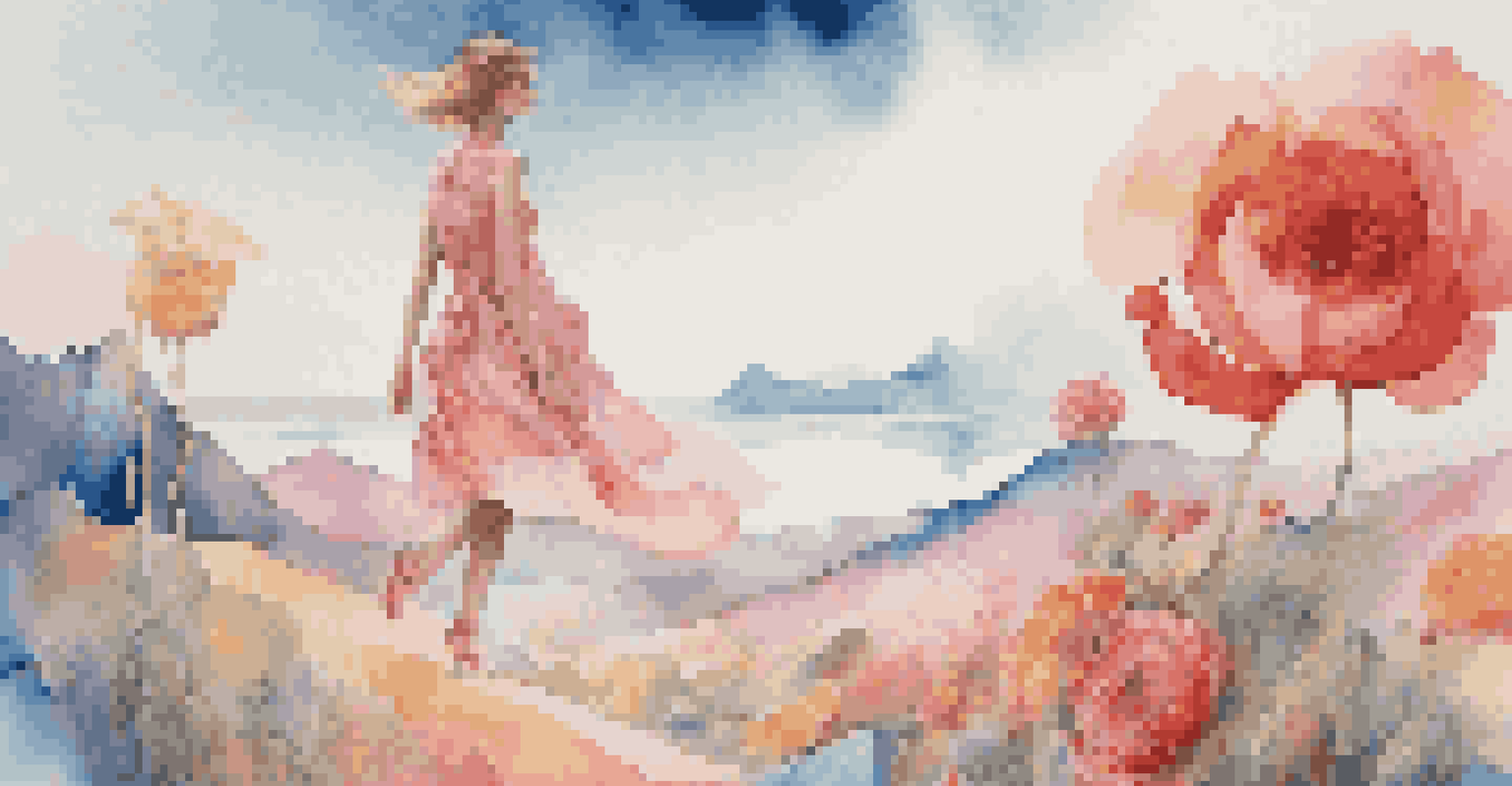The Relationship Between Fashion and Art in Advertising

The Historical Connection Between Art and Fashion
Fashion and art have been intertwined for centuries, with designers often drawing inspiration from artistic movements. For instance, the vibrant colors of Impressionism have influenced countless fashion collections, making art a vital source of creativity. This historical connection illustrates how the two fields inform and elevate each other, leading to the creation of visually stunning pieces.
Fashion is the armor to survive the reality of everyday life.
In the early 20th century, fashion illustrations became a popular medium, merging the two worlds even further. Artists like René Gruau and David Downton brought a unique aesthetic to fashion advertising, showcasing garments in a way that felt both artistic and aspirational. Through their work, they established the foundations of how fashion advertising would evolve.
Today, this relationship continues to thrive, with brands often collaborating with contemporary artists to create limited-edition pieces. Such partnerships not only enhance a brand’s image but also create a narrative that resonates with consumers, highlighting the importance of art in the fashion industry.
How Art Shapes Fashion Advertising Strategies
Art plays a crucial role in shaping the strategies behind fashion advertising. By infusing artistic elements into campaigns, brands can create a more engaging and memorable experience for consumers. This approach not only captures attention but also fosters an emotional connection, which is essential in today’s competitive market.

For example, luxury brands often utilize surrealism in their advertising to convey a sense of exclusivity and dreaminess. This artistic style encourages viewers to escape reality and immerse themselves in the brand's world, creating a desire to be part of that exclusive experience. The result is a powerful advertisement that resonates on a deeper level.
Art Inspires Fashion Innovation
Fashion and art have a long-standing relationship, with designers often drawing inspiration from artistic movements to create visually stunning collections.
Moreover, art-driven advertising allows brands to stand out by establishing a unique visual identity. When fashion brands embrace artistic creativity, they can differentiate themselves from the competition, ensuring their message is not just seen but felt.
The Role of Visual Storytelling in Fashion Campaigns
Visual storytelling is at the heart of successful fashion advertising, combining elements of art and narrative to captivate audiences. By using striking visuals, brands can communicate their message more effectively than with text alone. This method encourages viewers to engage with the campaign, fostering a sense of connection.
Art is not what you see, but what you make others see.
Take the iconic campaigns by brands like Gucci or Balenciaga, which often feature surreal visuals and whimsical narratives. These campaigns not only showcase the clothing but also tell a story that invites the viewer into a unique world. The result is a memorable experience that lingers long after the advertisement is seen.
As fashion advertising evolves, the importance of visual storytelling continues to grow. Brands that prioritize this approach are more likely to resonate with consumers, as they create an emotional bond that transcends mere product promotion.
Fashion as a Medium for Artistic Expression
Fashion itself can be considered a form of art, with designers using fabric as their canvas. This perspective highlights how clothing can convey deep emotions and societal messages, making fashion a powerful medium for artistic expression. When designers integrate their artistic vision into their collections, they elevate the garments to a new level of significance.
For instance, consider the collections of designers like Alexander McQueen, who often incorporated themes of beauty and tragedy into their work. Such collections not only showcase skillful craftsmanship but also provoke thought and discussion, proving that fashion can be a compelling form of storytelling.
Visual Storytelling Engages Consumers
Using striking visuals in fashion advertising allows brands to create emotional connections with consumers, making their campaigns more memorable.
Furthermore, as the lines between art and fashion blur, consumers increasingly view clothing as a means of personal expression. This shift encourages brands to embrace artistic elements in their designs, appealing to a market that values individuality and creativity.
Modern Collaborations Between Artists and Fashion Brands
In recent years, collaborations between artists and fashion brands have become increasingly popular. These partnerships allow for the fusion of unique visions, resulting in collections that are both innovative and visually striking. By collaborating with artists, brands can tap into new audiences and create buzz around their products.
A notable example is the collaboration between Vans and various artists, which transformed their classic sneakers into canvases for artistic expression. These limited-edition releases not only generated excitement among consumers but also highlighted the importance of art in everyday fashion items.
Such collaborations also emphasize the value of creativity in the fashion industry. By showcasing the work of artists, brands can elevate their image and position themselves as leaders in the realm of artistic innovation.
The Impact of Social Media on Fashion and Art Advertising
Social media has revolutionized the way fashion and art interact, providing a platform for artists and brands to showcase their work to a global audience. This accessibility allows for the rapid sharing of artistic fashion campaigns, creating a ripple effect that can lead to widespread recognition. As a result, brands can engage with consumers in real-time, fostering a sense of community around their artistic vision.
Platforms like Instagram and TikTok have become essential for fashion brands, allowing them to collaborate with artists who can create visually stunning content. This synergy not only amplifies the reach of the campaign but also encourages user-generated content, as consumers share their interpretations of the art and fashion they admire.
Collaborations Enhance Brand Appeal
Modern partnerships between artists and fashion brands lead to innovative, visually striking collections that resonate with consumers and elevate brand identity.
Ultimately, the impact of social media on fashion and art advertising is profound. It has democratized the conversation, allowing anyone to engage with and contribute to the narrative, enriching the relationship between these two dynamic fields.
The Future of Fashion and Art in Advertising
As we look toward the future, the relationship between fashion and art in advertising is poised for further evolution. With the rise of digital technologies, we can expect to see even more innovative approaches to how brands showcase their products. Augmented reality (AR) and virtual reality (VR) are just a couple of tools that could redefine the way consumers experience fashion campaigns.
Moreover, sustainability is becoming a significant theme in both the fashion and art worlds. Brands that prioritize eco-friendly practices and collaborate with artists who share these values will likely resonate with a growing audience concerned about the environment. This focus on sustainability could lead to fresh, creative solutions that benefit both industries.

In summary, the future of fashion and art in advertising is bright and full of possibilities. By continuing to embrace creativity, collaboration, and sustainability, brands can create impactful campaigns that speak to the heart of consumers.